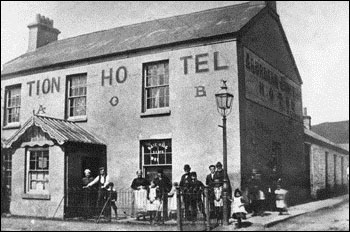History

Côr Meibion Abercynon was formed in 1970 at the former Junction Hotel in Abercynon. There were originally 20 members and today three of them still sing with the choir. Currently the choir consists of 33 members and there is a warm welcome for new or prospective members. The choir is supported by a ladies section which contributes strongly to the success of the choir. They are constant companions and supporters at our concerts, social events and on tour. The choir has performed concerts supporting many charitable organizations including Ty Hafan, The Rowan Tree Cancer Care, The George Thomas Hospice Appeal, Cancer Research and the Starlite Children’s Foundation.
Côr Meibion Abercynon has travelled extensively, performing throughout the United Kingdom and has also toured Brittany, Ireland, Canada, Scotland and Cornwall. The choir has performed at the Massed Choir Concerts at the Royal Albert Hall London, The Colston Hall Bristol, The Brangwyn Hall Swansea the Afan Lido in Port Talbot, Cardiff Arms Park, The Millenium Stadium, The Cardiff International Arena, St David’s Hall Cardiff and at The MCR Manchester. The choir’s initial visit to Brittany in 1982 when they represented Wales in the Celtic Festival in Lorient brought them into contact with the Breton Folk Group “Avel Hun Tadau Landaul”, an association that continues, the group having last visited and performed in South Wales in 2011.
